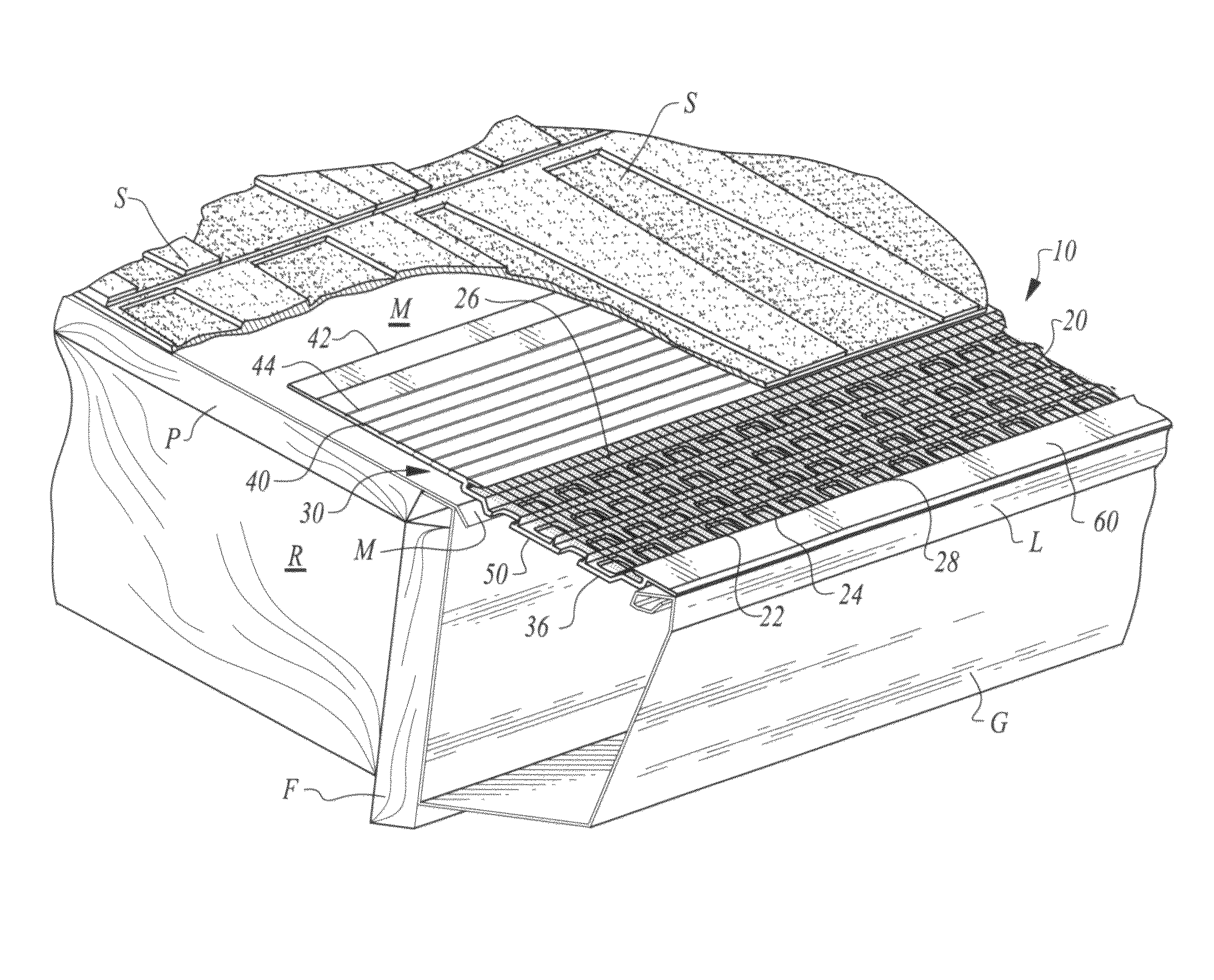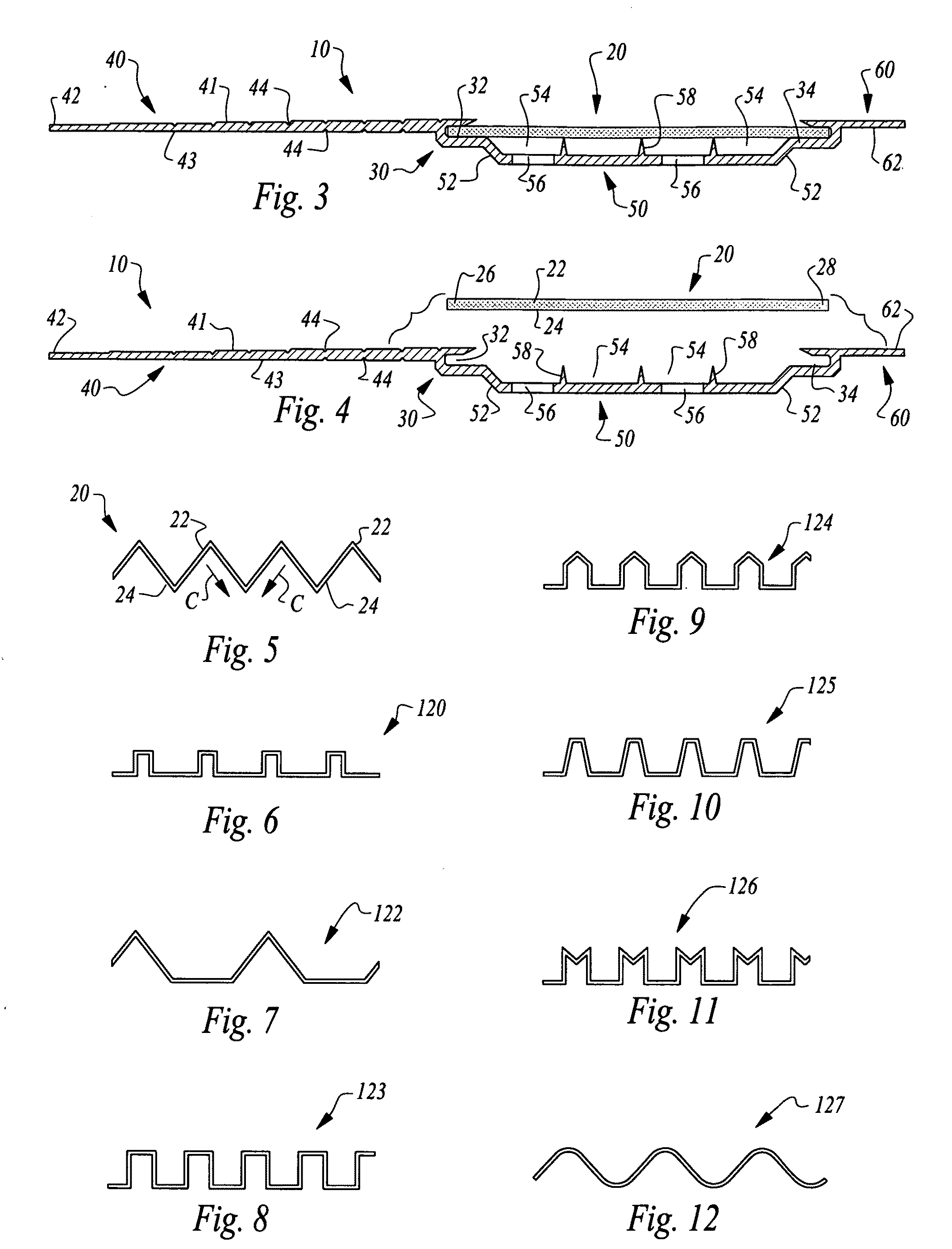Supported mesh debris preclusion system for gutters
a mesh and gutter technology, applied in the direction of machine supports, roof drainage, building repairs, etc., can solve the problems of clogging of gutters and frustrating the ability of mesh based gutter guards, and achieve the effect of simple but effective construction
- Summary
- Abstract
- Description
- Claims
- Application Information
AI Technical Summary
Benefits of technology
Problems solved by technology
Method used
Image
Examples
Embodiment Construction
[0026]Referring to the drawings, wherein like reference numerals represent like parts throughout the various drawing figures, reference numeral 10 is directed to a debris preclusion assembly (FIGS. 1 and 2) which can be placed overlying a gutter G adjacent a facia F of a roof R and with portions of the assembly 10 underlying shingles S. The assembly 10 includes an underlying support 30 with a mesh 20 on top of the support 30. Water going off of the shingles S is thus directed onto the mesh 20 (along arrow B of FIG. 2) and then conducted down through the mesh 20 and through holes 56 (FIGS. 3 and 4) in the support 30 before traveling (along arrow A of FIG. 2) underneath the support 30 and then dropping (along arrow E of FIG. 2) as a drop D into the gutter G.
[0027]In essence, and with particular reference to FIGS. 2-4, basic details of the debris preclusion assembly 10 are described, according to the most preferred embodiment. The assembly 10 is comprised of two main parts including a ...
PUM
 Login to View More
Login to View More Abstract
Description
Claims
Application Information
 Login to View More
Login to View More - R&D
- Intellectual Property
- Life Sciences
- Materials
- Tech Scout
- Unparalleled Data Quality
- Higher Quality Content
- 60% Fewer Hallucinations
Browse by: Latest US Patents, China's latest patents, Technical Efficacy Thesaurus, Application Domain, Technology Topic, Popular Technical Reports.
© 2025 PatSnap. All rights reserved.Legal|Privacy policy|Modern Slavery Act Transparency Statement|Sitemap|About US| Contact US: help@patsnap.com



